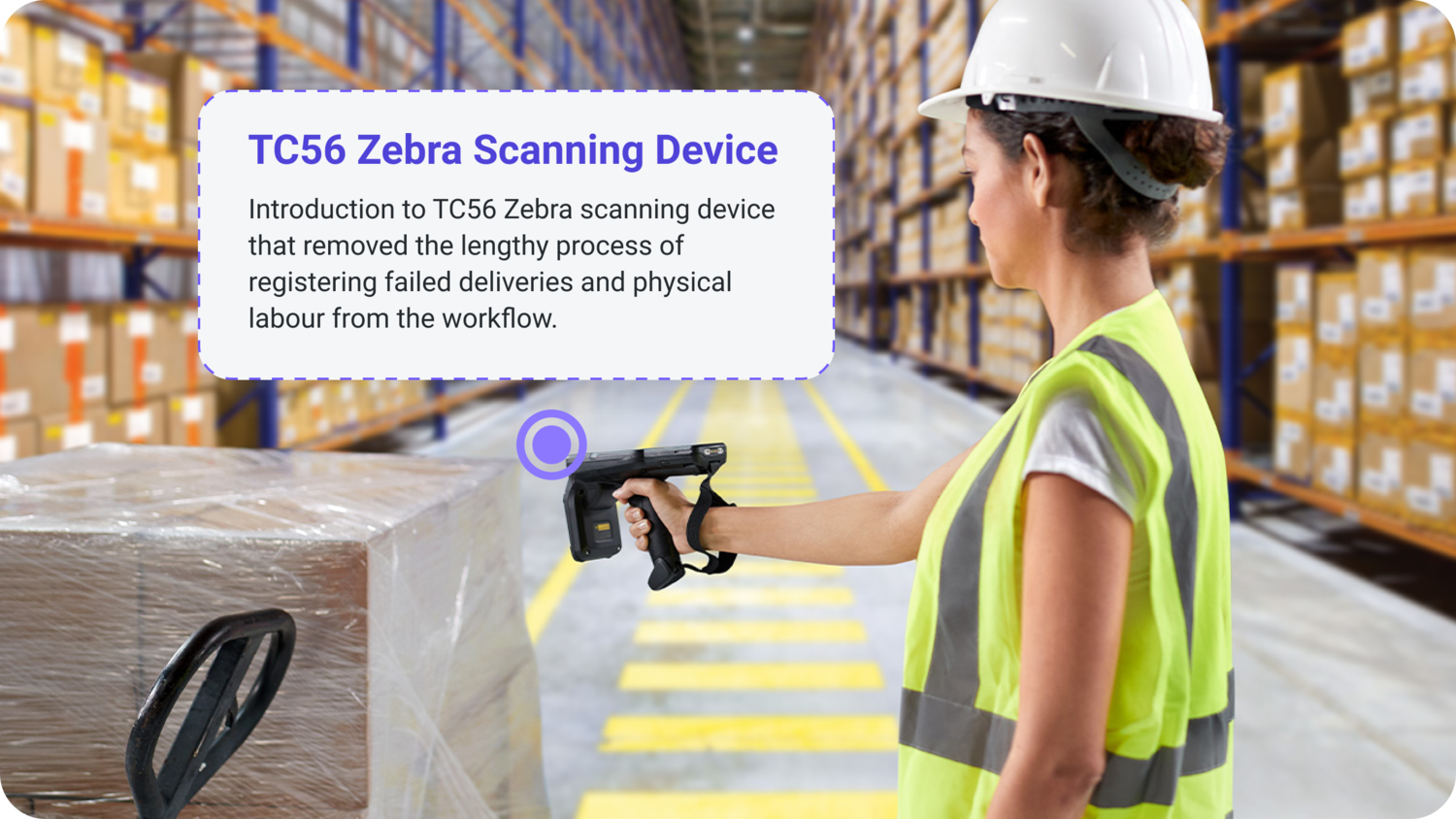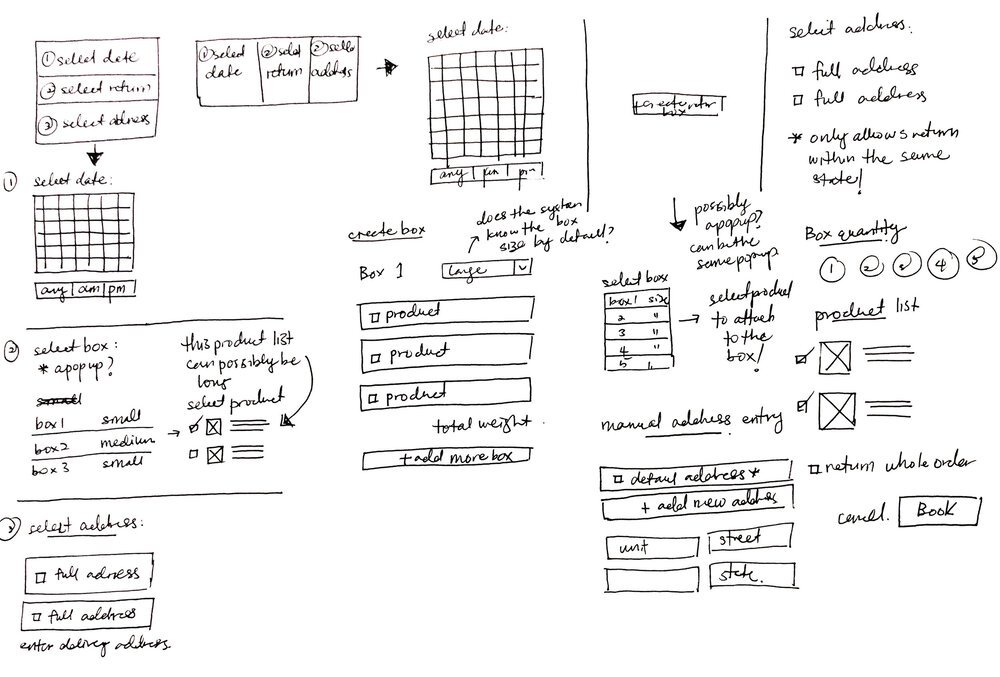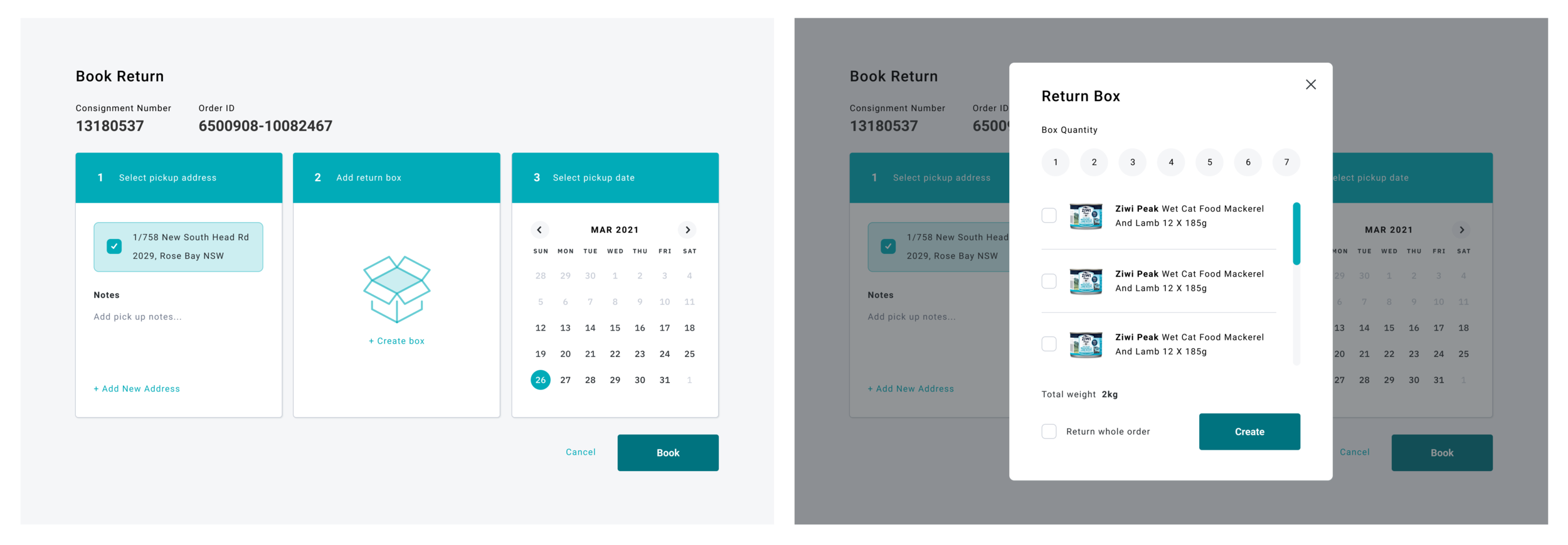Last Mile
Redesign warehouse’s delivery tracking flow
“Where is my delivery? 😕
Is the most asked questions by Pet Circle customers. While majority of Pet Circle customer orders currently are being delivered to customers’ front door with no issues, the orders that failed to be delivered weren’t being tracked and registered into the system efficiently.
So as much as our Customer Service team would like to provide our customers with the best answers when they called, we don’t have it.
— Last Mile
Business goals
To provide quick and accurate information to customers of their failed deliveries.
Better customer experience
Lower operation cost
Failed deliveries are costing the business a massive unnecessary cost and we want to reduce that.
“How can we solve this problem at the root of the cause, starting when customers’ orders leave (or didn’t) the warehouse? ” 🤔
— Last Mile
My role
Researched on-the-ground workflow.
Collaborated with the Product Manager to collect business requirements.
Interviewed stakeholders this includes warehouse staff, team leads, and the drivers.
Mapped existing and ideal workflow.
Created wireframes & prototypes.
Tested prototypes with stakeholders.
Designed the user interface.
Reviewed design development with developers.
1 Product Designer (myself)
1 Product Manager
1 Tech Lead
3 Full-stack Developers
4 Back-end Developer
My team
🔍 Discovery
These are the discovery methods that I used to have a better picture of the user flow and user pain points.
📝 Contextual Enquiry
🔍 Observation
🎤 User Interviews
🚜 Mapping existing digital & physical workflow
✍️ Stakeholder Interviews
Contextual Enquiry
Old scanning station setup
“I started using my phone to take pictures of the barcodes so I don’t have to lift each of these heavy boxes to the scanning station. ” 😩
— Warehouse staff
We also learned that users have started creating their own solution to the problem
📚 Key Learnings
Heavy boxes and immobile setup
The main challenges with the current setup that it isn’t mobile, disabling the warehouse staff to quickly register all the failed deliveries as the majority of the boxes are heavy (contains 20kg dog food, etc) and require heavy lifting.
Extremely fast-paced environment and constant distractions
It’s the nature of working in the warehouse that it is an extremely fast-paced environment and there are a lot of distractions in the middle of performing a task.
Lack of integrations
With the lack of integration between the systems, users were using Excel sheets, MinPin, and the delivery partner portal to perform this task.
“Pet Circle warehouse staff and the customer service team need an efficient way to identify failed delivery status because currently it lacks visibility and preventing them from fixing the situation for Pet Circle customers as soon as possible. ” 👍
Redefining the problem
Design
How do we remove physical labor from the equation?
🚜 3-Steps solutions
Warehouse • Redesign the workflow
By introducing the scanning device, we have removed the needs of moving around the returned boxes and this allows us to redesign the warehouse workflow.
Scanning device • Simplified the marking process
The scanning device allows users to quickly mark the returned boxes without having to enter it manually at the scanning station.
MinPin (desktop) • Improve customer service communications
We decided to tackle the customer service screen design as well to maximise the impact to this project.
Step 1 • Redesign the warehouse workflow
New on-the-ground workflow
Old on-the-ground workflow
Step 2 • Simplified the marking process
New returned boxes marking flow
We introduced integrations between the platforms so the whole marking process can be done on 1 platform (Spaniel) by using the scanning device.
Old returned boxes marking flow
Wire-framing and usability testing
Second iteration
First iteration
The lack of a full view of the historical events of each box to help users to understand what is the next step that they need to take.
The status icons didn’t feel intuitive enough to explain what it represents.
The full view of the consignment details was a bit confusing in terms of relating the box status to the event history.
User Interface Design
User Interface Design
There are two parts of screen design required for this project, and this is part of UI design for the scanning device.
It’s complicated
This is the last part of our solution. Our customer service team is required to reach out to customers before rearranging another delivery job with our delivery partner for cases like when customers entered the wrong address, or for reasons that we need further investigation.
And that brings us to the decision of housing this feature on desktop (MinPin) vs the scanning device (Spaniel) for better usability.
Step 3 • Improve customer service communication
Sketches
Usability testing
Second iteration
Logistic nightmare: While discussing the flow with the stakeholders, we realized that allowing a big window for return booking will create a logistics nightmare in the warehouse. We decided to reduce the return window to 7 business days.
Address determines return window: The Product Manager discovered a technical limitation of selecting the date first before the address. After further discussion and checking in with users, we decided to switch the order of step 1 and 3.
First iteration
As per talking to the users (CS team) we found out that customers don’t usually return the items as per instructed, or in the same way it has been sent to them.
Customers will probably return the items in different boxes. (not Pet Circle original box)
Customers will put different items in different box sizes. Meaning there is no value for the CS team to assign which item goes into which box.
Prototype
🎉 Results
Keeping our customers informed, always
Pet Circle Customer service team is now able to provide quick and accurate responses to our customers and to locate exactly where our missing customers’ orders are at and plan on the best next step to get it to the customers’ hand as soon as possible
From hours down to minutes
The simplified and efficient journey to our warehouse staff to handle failed deliveries has saved hours of warehouse staff time marking these parcels with very small room for errors, and no physical labor required!
Better conversations with delivery partner
By having clarity of how Pet Circle deliveries are being handled, we as a business now are able to have a much better conversation with the delivery partner for cost negotiation and opportunities to improve the partnership.
Last Mile Project has been introduced to all 6 Pet Circle warehouses all around Australia. 🥳
— Pet Circle
















